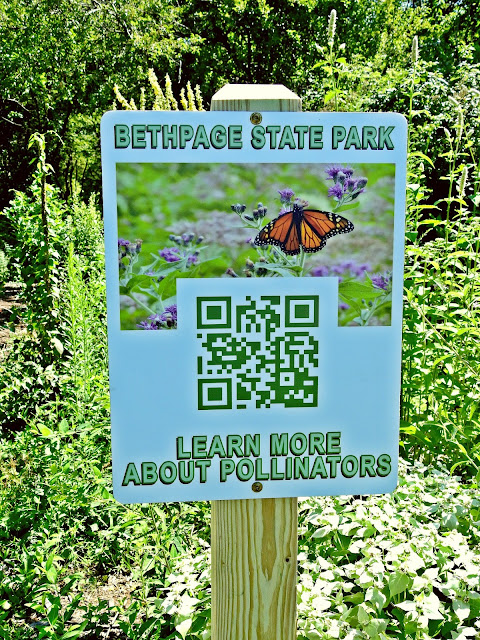Bethpage State Park's New Butterfly Conservation Project - Reintroducing the Baltimore Checkerspot
This summer, Bethpage State Park started a joint conservation program with Caumsett State Park to establish a Baltimore Checkerspot colony at our park. Baltimore Checkerspots are a small, native butterfly with striking coloration. Once believed to inhabit meadows all-across the Eastern Seaboard, today their numbers are unfortunately not well-documented or widely researched.
 |
| At one time there were many colonies in Marlyand, where the Baltimore Checkerspot became the state insect and even got its name for an appearance resembling Lord Baltimore's coat-of-arms! |
However, in 2009, Sue and Ken Feustel discovered a Baltimore Checkerspot colony at Caumsett State Park. This was the the first of its kind, as prior to, only a few individual butterflies had ever been reported on Long Island! Some speculated that the Checkerspots ventured across Long Island Sound, and into Caumsett, from colonies in Connecticut and Westchester.
Since this exciting discovery, Sue has been counting Baltimore Checkerspots at Caumsett year-after-year...and if that's not enough, she also manages and protects this butterfly's habitat too!
When Bethpage State Park staff found out about this initiative, as you could imagine, we wanted in! With a horticulturist and myself (the park ecologist) on staff to help facilitate the process, our park could operate as a new breeding grounds. If successful, there would be numerous rewards including higher local checkerspot numbers and an increase of pollination at our park!
To get started, we relied on the guidance of Don Adams, a Baltimore Checkerspot expert and researcher from Massachusetts; he told us the best way to begin a healthy colony would be to bring over eggs from Caumsett (caterpillars are a riskier transfer as they are a likely host of parasites). Sue and her team (left) mapped out sites where they had found Baltimore Checkerspot eggs and on June 30th, I went to pick them up.
I was then able to transfer three egg masses back to Bethpage State Park. The eggs were then placed in a designated, protected area where Vic (Park Horticulturist) and I had already planted dozens of English Plantain (right). This plant actually grows wild at the park and is a major host plant for Baltimore Checkerspot larvae. Only a few days after the transfer, the eggs successfully hatched!
Checkerspot eggs transition through different color stages: yellow, deep red and then a dull gray, right before larvae will emerge.
In the larval stage, Baltimore Checkerspots stay close to one another, forming tent-like structures around their host plant for protection against the elements and predators (right). Within these tents, the caterpillars will feed voraciously and eventually move on to the next plantain to repeat the process (see video).
When temperatures begin to cool, caterpillars will over-winter in leaf litter and under plants. Next spring, the same individuals will venture out above-ground (still as caterpillars) and go through metamorphosis. This means it takes a full year for the Baltimore Checkerspot to complete its life cycle.
Larvae will be approximately this size when they surface next spring!
Lastly, Bethpage State Park thanks Don Adams and Sue Feustel for their immense expertise! With their continued support, we've been able to take on this important conservation project with ease...and better yet, build a scientific collaboration between two NYS Parks!









So informative..can't wait to see what evolves next year!!
ReplyDeleteThank you! I'll definitely be posting updates, stay tuned!
ReplyDelete